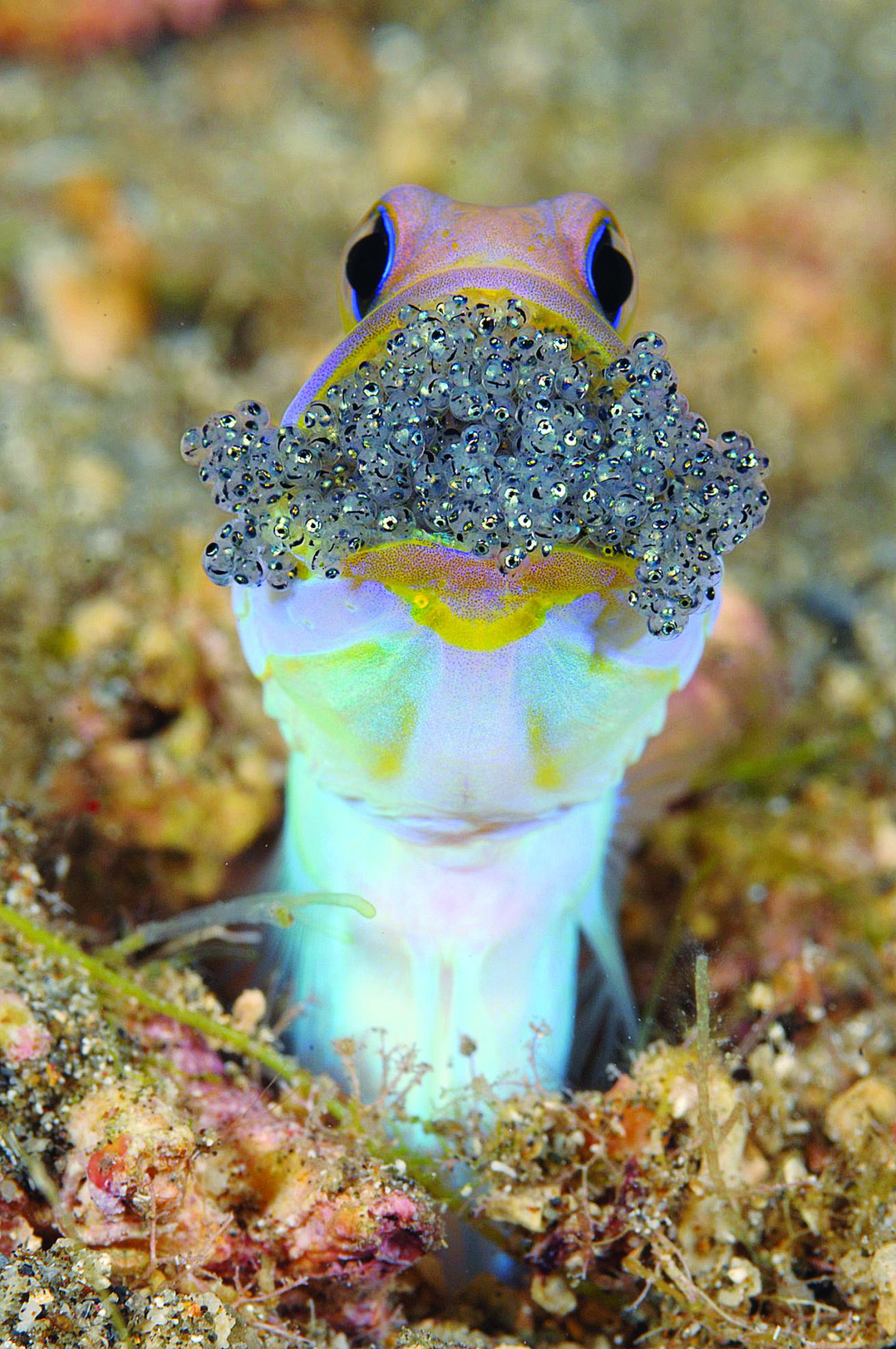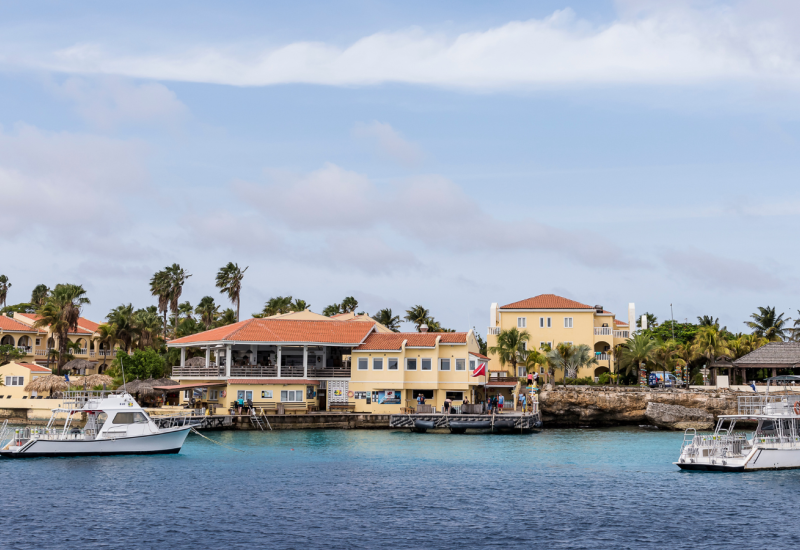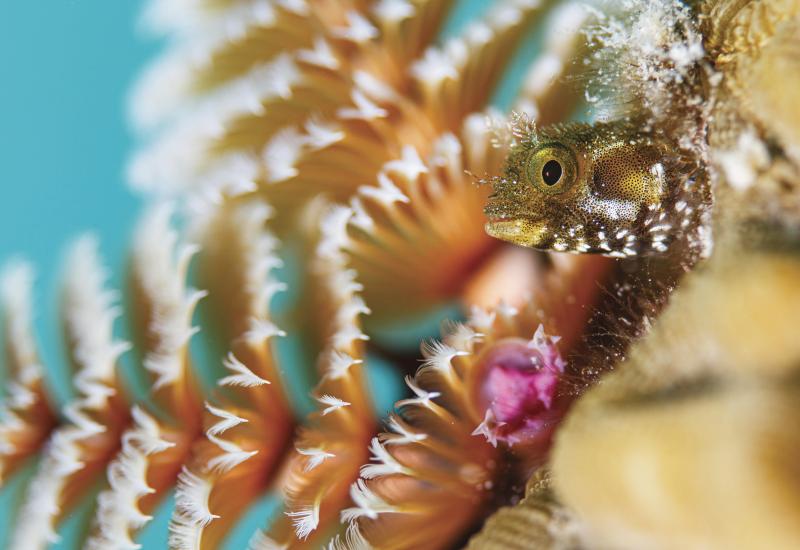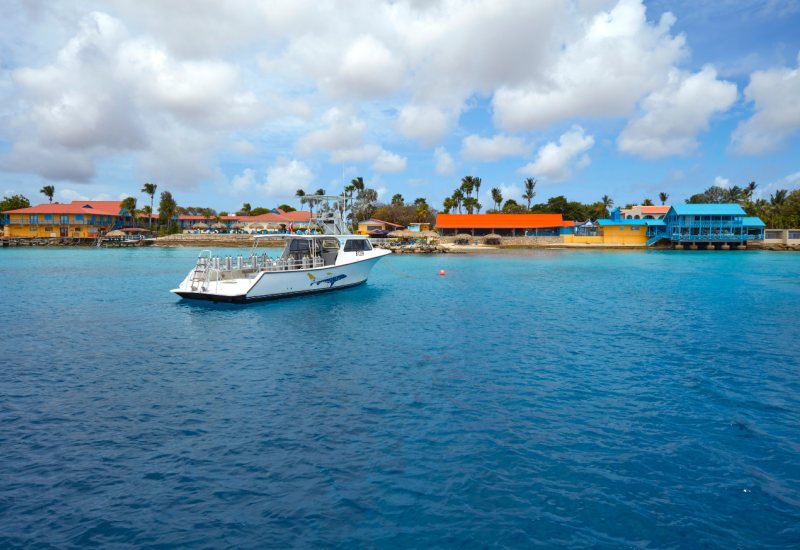Father Figures of the Oceans

Yellowhead Jawfish
Keri Wilk
There are a lot of deadbeat dads in the animal kingdom, but an exceptional few ocean species swing the other way entirely. These standup fathers go above and beyond to birth their young amid the bustle and danger of the oceans. Catching a glimpse of them with child can be tricky, however. So we’re here to help with a roundup of our five favorite father figures from throughout the world’s reefs — and our first-pick places to find them.
1. Leafy Seadragons, South Australia
Any hunt for the weirdest, wildest father figures in the ocean should start in the kelp beds of South Australia. Look carefully among the flowing fronds to spot the elaborately fringed leafy seadragon, whose yellow/green appendages flare out like leaves, making them almost indistinguishable from their kelp backdrops. As relatives of seahorses, leafy seadragons are famously father-brooded. During mating, females afix their eggs to special brood patches on the males’ tails; males then fertilize the eggs and carry them until they hatch almost 50 days later.
WHEN TO GO: November to February, summer in South Australia.
OPERATOR: Guides at Kangaroo Island Dive and Adventures off Adelaide have more than a decade of experience diving with and observing leafy seadragons.
PRICE TAG: From $150 for a single-tank shore dive to $335 for a two-tank boat dive on the remote north coast of Kangaroo Island.
2. Banggai cardinalfish, Lembeh, Indonesia
A tiny fish with a big story, the Banggai cardinalfish is one of an elite group of fishes whose males undertake an odd incubation procedure called mouth brooding. Though Banggai cardinalfish are naturally endemic only to Indonesia’s Banggai Islands, off Sulawesi, today one of the best places to find these aquarium favorites is further north, in Lembeh Strait, where an inadvertent population has exploded. Mating pairs of Banggai cardinalfish break off from their shallow-water groups and establish their own territory. After couples spawn into the water, the males gather the eggs into their mouths and carry their young, not only until they hatch but also for about 10 days afterward, only releasing them when they’re strong enough to survive on the reef.
WHEN TO GO: Banggai cardinalfish spawn on a lunar cycle, usually around the full moon. In general, Lembeh has warmer water but more rain from December to February, while June to September can have better visibility but colder water.
OPERATOR: Find abundant Banggai cardinalfish in full force on the shallows of the house reef at Black Sand Dive Retreat (blacksanddive.com). Easy access offers plenty of bottom time to search for mouth-brooding males.
PRICE TAG: Black Sand Dive Retreat has 3-night/5-dive packages starting at around $500 for double occupancy.
3. Yellowhead Jawfish, Bonaire
Another must-see mouth-brooder, the male yellowhead jawfish rarely ventures far from his burrow, meticulously crafted in sand and rubble seafloors throughout the Caribbean. During the week that he carries his eggs, the yellowheaded jawfish periodically churns the bundle by ejecting them into the water and quickly sucking them back into his mouth. Bonaire is a particularly good spot to see these father figures in action, thanks both to the island’s protected marine-park status and its vibrant local critter-spotting community, who can help pinpoint brooding males.
WHEN TO GO: Year-round.
OPERATOR: Buddy Dive has a falling-down-easy house reef, an ingenious drive-through tank station and savvy guides who facilitate productive critter spotting sessions.
PRICE TAG: Buddy Dive’s Drive and Dive packages start at around $958/person, double occupancy.
4. Pygmy Seahorses, Milne Bay, PNG
A joy and challenge to find, whether they’re pregnant or not, the pygmy seahorse is a perennial favorite of macro photographers making their pilgrimage to the Coral Triangle. Papua New Guinea’s Milne Bay offers reliable sightings on pinnacle dives like Crinod City and Whompers. As with all their kin, male pygmy seahorses carry and birth their young. However, unlike many other hippocampi, which carry the eggs outside their body on a brood patch, male pygmy seahorses have kangaroolike pouches on their bellies. Pregnant males appear noticeably swollen around the midsection.
WHEN TO GO: Pygmy seahorses mate and give birth throughout the year.
OPERATOR: Dancer Fleet’s Star Dancer runs 10-night charters in Milne Bay from the Driftwood Resort near Aloutau.
PRICE TAG: All cabins start at $2995, not including port and environmental fees.
5. Sergeant Majors, Lanai, Hawaii
The most widespread and easy to spot Mr. Moms on this list, sergeant majors are close relatives of damselfishes, and they share the spitfire personalities and group dynamics of their more diminutive cousins. Uniquely, however, male sergeant majors watch over the eggs by preparing large encrusting nests of egg masses on solid, open surfaces like large rocks and the hulls of shipwrecks. These easy-to-spot nests look like purple splotches of encrusting corals, and the father sergeant majors will valiantly fight any creature who intrudes upon his space, no matter its size. Subsets of sergeant majors can be found throughout the Caribbean and Pacific. The lava rock ledges off Lanai, Hawaii, are particularly good nesting sites — so ideal that there’s even a dive site here named after these abundant fish.
WHEN TO GO: Year round. Though summer months, June to October, bring warmer water and calmer conditions.
OPERATOR: Dive Maui/Hawaiian Rafting Adventures runs small group trips from West Maui to Lanai, five days a week.
PRICE TAG: Two-tank boat trips to Lanai cost $139/person.

Keri Wilk
There are a lot of deadbeat dads in the animal kingdom, but an exceptional few ocean species swing the other way entirely. These standup fathers go above and beyond to birth their young amid the bustle and danger of the oceans. Catching a glimpse of them with child can be tricky, however. So we’re here to help with a roundup of our five favorite father figures from throughout the world’s reefs — and our first-pick places to find them.
1. Leafy Seadragons, South Australia
Any hunt for the weirdest, wildest father figures in the ocean should start in the kelp beds of South Australia. Look carefully among the flowing fronds to spot the elaborately fringed leafy seadragon, whose yellow/green appendages flare out like leaves, making them almost indistinguishable from their kelp backdrops. As relatives of seahorses, leafy seadragons are famously father-brooded. During mating, females afix their eggs to special brood patches on the males’ tails; males then fertilize the eggs and carry them until they hatch almost 50 days later.
WHEN TO GO: November to February, summer in South Australia.
OPERATOR: Guides at Kangaroo Island Dive and Adventures off Adelaide have more than a decade of experience diving with and observing leafy seadragons.
PRICE TAG: From $150 for a single-tank shore dive to $335 for a two-tank boat dive on the remote north coast of Kangaroo Island.
2. Banggai cardinalfish, Lembeh, Indonesia
A tiny fish with a big story, the Banggai cardinalfish is one of an elite group of fishes whose males undertake an odd incubation procedure called mouth brooding. Though Banggai cardinalfish are naturally endemic only to Indonesia’s Banggai Islands, off Sulawesi, today one of the best places to find these aquarium favorites is further north, in Lembeh Strait, where an inadvertent population has exploded. Mating pairs of Banggai cardinalfish break off from their shallow-water groups and establish their own territory. After couples spawn into the water, the males gather the eggs into their mouths and carry their young, not only until they hatch but also for about 10 days afterward, only releasing them when they’re strong enough to survive on the reef.
WHEN TO GO: Banggai cardinalfish spawn on a lunar cycle, usually around the full moon. In general, Lembeh has warmer water but more rain from December to February, while June to September can have better visibility but colder water.
OPERATOR: Find abundant Banggai cardinalfish in full force on the shallows of the house reef at Black Sand Dive Retreat (blacksanddive.com). Easy access offers plenty of bottom time to search for mouth-brooding males.
PRICE TAG: Black Sand Dive Retreat has 3-night/5-dive packages starting at around $500 for double occupancy.
3. Yellowhead Jawfish, Bonaire
Another must-see mouth-brooder, the male yellowhead jawfish rarely ventures far from his burrow, meticulously crafted in sand and rubble seafloors throughout the Caribbean. During the week that he carries his eggs, the yellowheaded jawfish periodically churns the bundle by ejecting them into the water and quickly sucking them back into his mouth. Bonaire is a particularly good spot to see these father figures in action, thanks both to the island’s protected marine-park status and its vibrant local critter-spotting community, who can help pinpoint brooding males.
WHEN TO GO: Year-round.
OPERATOR: Buddy Dive has a falling-down-easy house reef, an ingenious drive-through tank station and savvy guides who facilitate productive critter spotting sessions.
PRICE TAG: Buddy Dive’s Drive and Dive packages start at around $958/person, double occupancy.
4. Pygmy Seahorses, Milne Bay, PNG
A joy and challenge to find, whether they’re pregnant or not, the pygmy seahorse is a perennial favorite of macro photographers making their pilgrimage to the Coral Triangle. Papua New Guinea’s Milne Bay offers reliable sightings on pinnacle dives like Crinod City and Whompers. As with all their kin, male pygmy seahorses carry and birth their young. However, unlike many other hippocampi, which carry the eggs outside their body on a brood patch, male pygmy seahorses have kangaroolike pouches on their bellies. Pregnant males appear noticeably swollen around the midsection.
WHEN TO GO: Pygmy seahorses mate and give birth throughout the year.
OPERATOR: Dancer Fleet’s Star Dancer runs 10-night charters in Milne Bay from the Driftwood Resort near Aloutau.
PRICE TAG: All cabins start at $2995, not including port and environmental fees.
5. Sergeant Majors, Lanai, Hawaii
The most widespread and easy to spot Mr. Moms on this list, sergeant majors are close relatives of damselfishes, and they share the spitfire personalities and group dynamics of their more diminutive cousins. Uniquely, however, male sergeant majors watch over the eggs by preparing large encrusting nests of egg masses on solid, open surfaces like large rocks and the hulls of shipwrecks. These easy-to-spot nests look like purple splotches of encrusting corals, and the father sergeant majors will valiantly fight any creature who intrudes upon his space, no matter its size. Subsets of sergeant majors can be found throughout the Caribbean and Pacific. The lava rock ledges off Lanai, Hawaii, are particularly good nesting sites — so ideal that there’s even a dive site here named after these abundant fish.
WHEN TO GO: Year round. Though summer months, June to October, bring warmer water and calmer conditions.
OPERATOR: Dive Maui/Hawaiian Rafting Adventures runs small group trips from West Maui to Lanai, five days a week.
PRICE TAG: Two-tank boat trips to Lanai cost $139/person.










